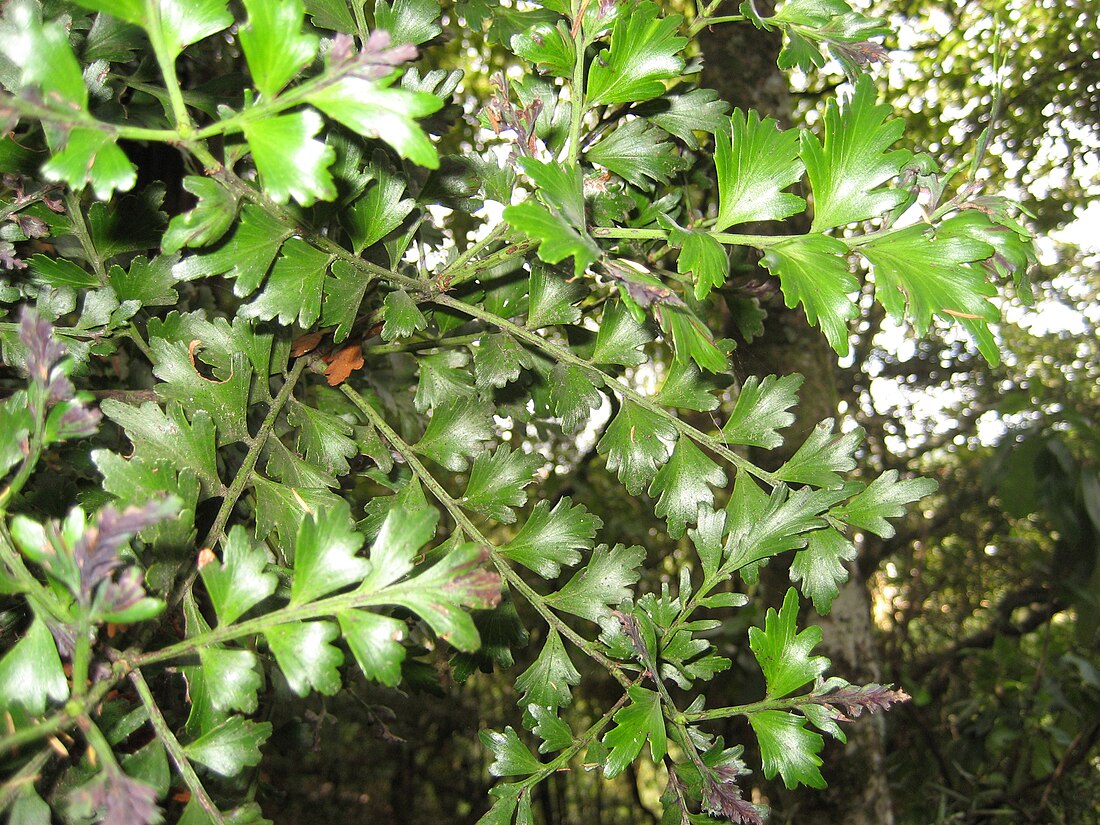Top Qs
Timeline
Chat
Perspective
Phyllocladus trichomanoides
Species of conifer From Wikipedia, the free encyclopedia
Remove ads
Phyllocladus trichomanoides, commonly known as the tānekaha or celery pine, is a coniferous tree endemic to New Zealand.
Remove ads
Description
Tānekaha is a medium-sized forest tree growing up to 25 metres (82 feet) in height and 1 m trunk diameter.[2] The main structural shoots are green-skinned for 2–3 years, then turn brown as the bark thickens. The leaves are sparse, tiny, scale-like, 2–3 mm long, and only green (photosynthetic) for a short time, soon turning brown.
Most photosynthesis is performed by phylloclades, highly modified, leaf-like short shoots; these are arranged alternately, 10–15 on a shoot, the individual phylloclades rhombic, 1.5–2–5 cm long. The seed cones are berry-like, with a fleshy white aril surrounding but not fully enclosing the single seed.
Remove ads
Distribution
In the North Island, this species is found in lowland forests from Te Paki to 40°S.[2] In the South Island, this species is found in northern Marlborough and Nelson to 41°30'S.[2]
Pests and diseases
This species plays host to the New Zealand endemic beetle Agapanthida morosa.[3]
Economic uses
Like the kauri, tānekaha shed their lower branches, producing smooth straight trunks and knot-free timber which is sought after for its strength.
The bark is rich in tannin, from which Māori extracted a red dye.[citation needed]
References
External links
Wikiwand - on
Seamless Wikipedia browsing. On steroids.
Remove ads


